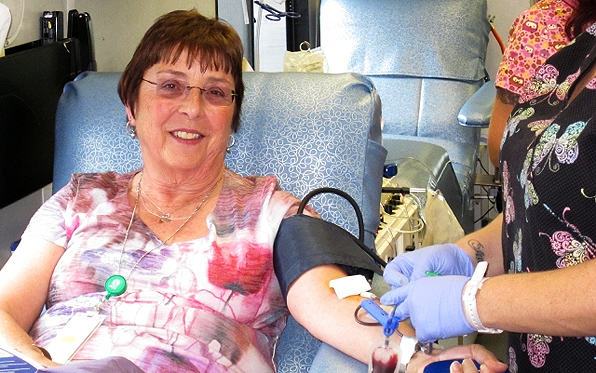A Comfort for Grieving Families
/You may notice an array of colorful and happy little stuffed animals on two low shelves when you walk into Medical Examiner Chaplain Joe Davis’s office. No, he doesn’t collect them as a hobby. They are there to help young children cope with the family tragedy that has brought them to the Medical Examiner’s office.
When grieving families come into his office, they are often preoccupied with their sorrow. Young children are sometimes asked to sit quietly in a corner and wait while the grownups talk. So, before he starts talking to the adults, Davis said he will ask a child to help him. He tells them the beanies are homeless and asks the child if he or she might be able to give one a home. He hopes the beanies will make the experience less frightening and harsh for the child,
Davis has an easygoing and personable style. The ordained pastor is also a certified trauma service specialist and has worked as a volunteer at the Medical Examiner’s office for 12 years. Volunteering quickly turned into a full-time unpaid job when Davis founded the Bereavement Center for families and friends whose loved ones have died.
“I am the only full-time chaplain for a medical examiner or coroner in the United States,” Davis said. “And it’s challenging. It’s hard dealing with loss every single day … it’s not something you’re going to get people lined up to want to do. “
Yet, Davis feels like he is where he needs to be to help people when they need it most. The Medical Examiner’s Office investigates approximately 3,000 deaths each year. Most of the bodies that end up in the Medical Examiner’s office are there because of an unexpected, accidental or violent death including those involving children.
At first, Davis was there to help staff cope with the daily traumatic deaths. While volunteering, he learned about a program in Washington D.C. that assists children and families with grief. Then Davis developed a similar program for San Diego County.
“It has been very successful and is the model that a number of other jurisdictions have adopted or are in the process of implementing,” said Chief Medical Examiner Glenn Wagner. “The concept behind the program is simple: provide ongoing support to families linked to the Medical Examiner’s Office through the death of a loved one or acquaintance. That support is multidisciplinary—financial, psychological, and spiritual, if desired.”
This Medical Examiner’s Bereavement Center program is one of only five like it in the country, and the only one in California. None of the others are run entirely by a volunteer. Most similar programs have been reduced significantly or are limited only to the families of violent crime victims, Davis said. Essentially, in other programs, if the government budget goes away, so does the program, but that won’t happen here, he said.
Through his relationship with San Diego Hospice and their Center for Grief, Care, and Education, Davis has been able to offer free grief counseling to families. Each family also receives a resource guide that includes a practical list of what needs to be done after a person dies, such as notifying credit card companies and the IRS.
Davis said he has given out 15,000 guides and he always receives grateful feedback on the information.
In addition, the program has helped save the County from potential costs for abandoned bodies. Families sometimes choose to abandon a body if they cannot afford to cremate or bury their loved one. Through his nonprofit, Davis has been able to provide financial assistance to 175 families who were unable to afford cremating their loved one.
“One of the peripheral benefits from this program is that with the economic downturn, many coroners and medical examiners have experienced an increase in the number of abandoned bodies, which puts more financial stress on the counties. Our numbers continue to decline, in part, because this program allows families to avoid making that often painful decision by linking them to a variety of community resources,” Wagner said.
There is another side benefit. The Medical Examiner investigators are relieved of some stress by knowing that surviving families are going to be helped, Davis said. In such an emotional work environment, an act of kindness like paying for a cremation can often make a big difference for those investigators who have been on the scene.
The pastor said he is truly proud to work in the office and is impressed with the work that is carried out in the office.
“The Medical Examiner staff here is amazing, top to bottom. They do their very best to treat families and bodies like they would want their own loved ones treated,” Davis said.
Sometimes it is literally a thankless job, because people in the throes of grief don’t always realize they are being helped, but that is okay with him.
“There’s potential in every situation. In my experience, the more intense the situation, the more opportunities there are just to help someone,” Davis said. “There’s devastation there. We can’t change it, we can’t make it better but we sure can stop it from being worse in very, very practical ways.”
To learn more about the Bereavement Center, visit http://www.sdcounty.ca.gov/me/families/bereavement.html.



